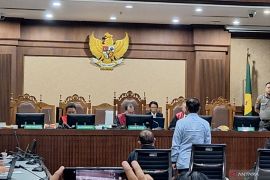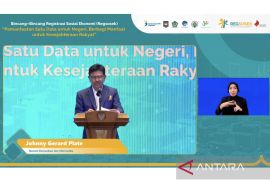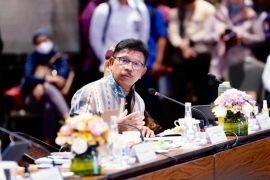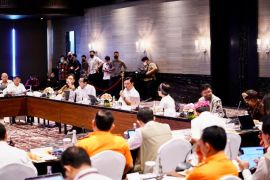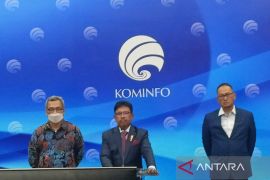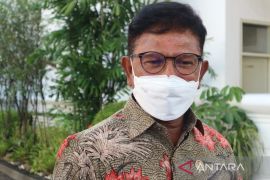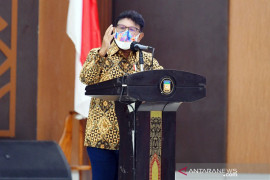"In an effort to implement and develop high-quality 5G services, synergies are necessary in at least in five policy aspects," Minister of Communication and Informatics Johnny G. Plate noted in a statement here on Thursday.
The five aspects are regulations, radio frequency spectrum, business model, infrastructure, ecosystem tools and digital talent.
From a regulatory perspective, Indonesia currently has eight regulations that support the adoption of the latest generation radio network, specifically Law No. 36 of 1999 on Telecommunications; Law No. 11 of 2008 as amended by Law No. 19 of 2016 on Information and Electronic Transactions (UU ITE); Law No. 11 of 2020 on Job Creation; and Government Regulation no. 52 of 2000 on the Operation of Telecommunications.
Other regulations that support the implementation of 5G are Government Regulation No. 53 of 2000 on the Use of Radio Frequency Spectrum and Satellite Orbit; Government Regulation No. 46 of 2021 on Post, Telecommunications, and Broadcasting; Bill on Personal Data Protection; and regulations of the Minister of Communication and Informatics as the implementing rules.
Inter-regulatory synergy is necessary during the 5G era in order to boost data growth, with the massive deployment of Internet of Things service sensors.
To ensure an optimal network when it adopts 5G, the ministry plans to provide frequency bands in all ranges, specifically low band, middle band, and high band.
The ministry has applied two policies in order to optimize its use for the community, specifically neutral technology and the Farming and Frequency Refarming Program.
With regard to business models, Plate views that the presence of 5G will trigger business model changes, both in the telecommunications industry and in other vertical industries, such as manufacturing and automotive.
Related news: Jay Chen and Huawei's commitment to advancing Indonesia's ICT industry
"This is due to the potential of 5G services that no longer only focuses on human-to-human communication patterns but also integrates human-to-machine as well as creating networks of communication between machine-to-machine," he remarked.
Meanwhile, for infrastructure, fiberization, and strengthening of the overall infrastructure are deemed necessary to support the 5G network.
It highlights three main infrastructure for 5G, specifically BTS towers, efficiency, and regularity of urban planning as an arterial route for fiber optic network distribution and fiberization acceleration.
In the aspects of ecosystem tools and digital talents, he believed that 5G should be able to provide opportunities for domestic potential.
This aspect starts from the Domestic Content Level (TKDN) of 5G devices. The ministry is working with the Ministry of Industry to formulate the right policy. Currently, the TKDN for 4G is 40 percent.
The ecosystem in this network should be built, so that Indonesia can develop its own 5G applications.
Hence, it is necessary to have digital talent that have the capability and insight into 5G. The ministry is preparing digital talent through imparting formal education, such as the Multimedia College and the Digital Talent Scholarship program. Related news: Huawei: 5G adoption faster than expected in industrial processes
Translator: Natisha A, Fardah
Editor: Rahmad Nasution
Copyright © ANTARA 2021

